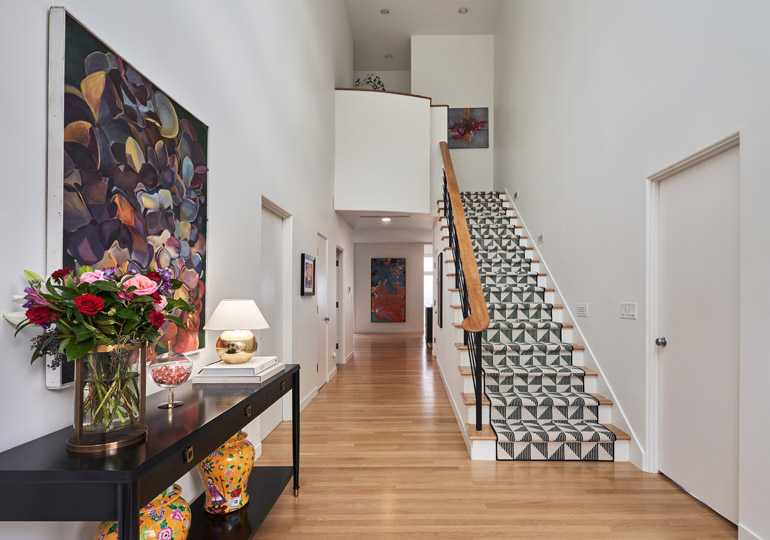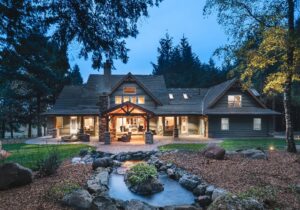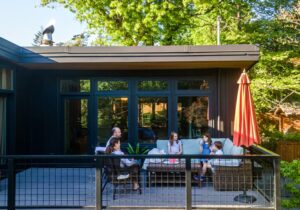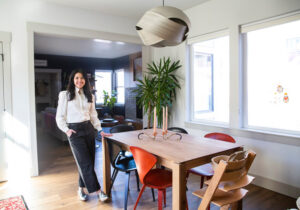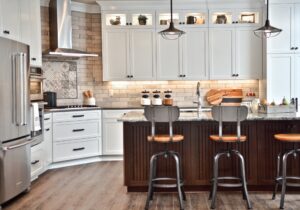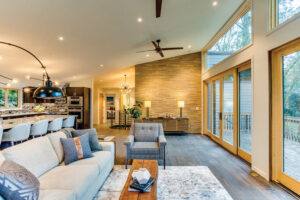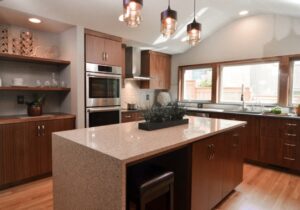A Neil Kelly remodel creates a dual-living home for two generations.
Photography by Darius Kuzmickas
There was so much to recommend the 1960s contemporary in the Southwest hills — three separate floors, 4,275 square feet of living space and beautiful views of Portland from the Southwest Hills. But it was going to need some work before it could be the perfect place for a couple and a parent seeking a shared living space.
“Working with them was a lot of fun,” says Tonya Bellusci, interior designer for the Portland design and build company Neil Kelly, of her clients. “They are very stylish people and they really knew what they wanted.”
More families are choosing to live in multigenerational homes, and converting these spaces poses particular design challenges. First there are the functional needs of those involved and the accommodations necessary for aging in place. Then there is the aspect of combining the design aesthetic of two separate generations. Bellusci’s task was to modernize the space by updating the materials, simplifying the home’s overall appearance, providing efficient storage and making it livable for the family where they were. But she also needed to make it beautiful.
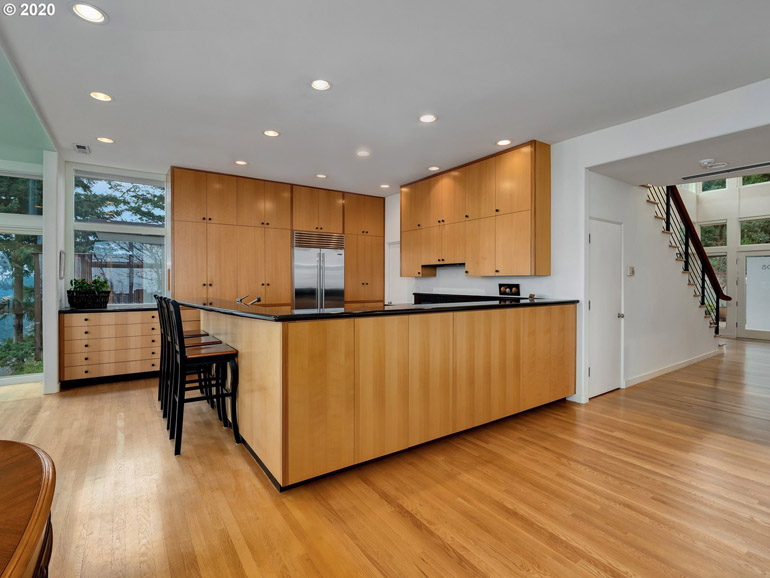
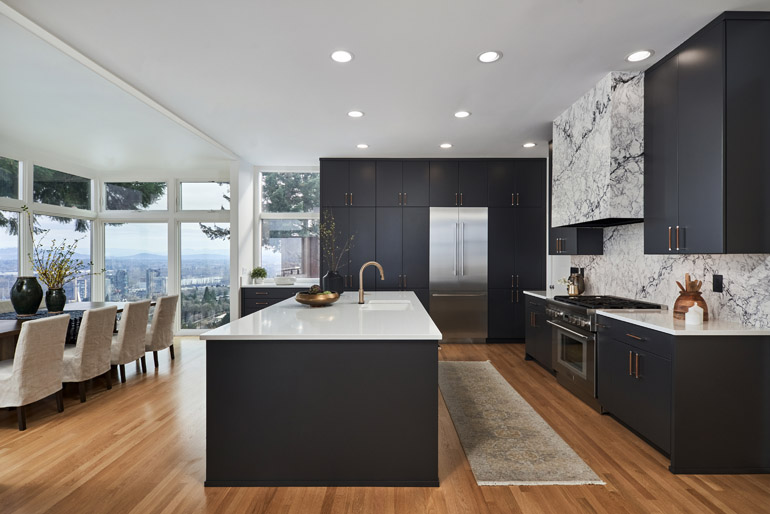
Removing a peninsula and enlarging the kitchen island created a simple yet dramatic space for shared living.
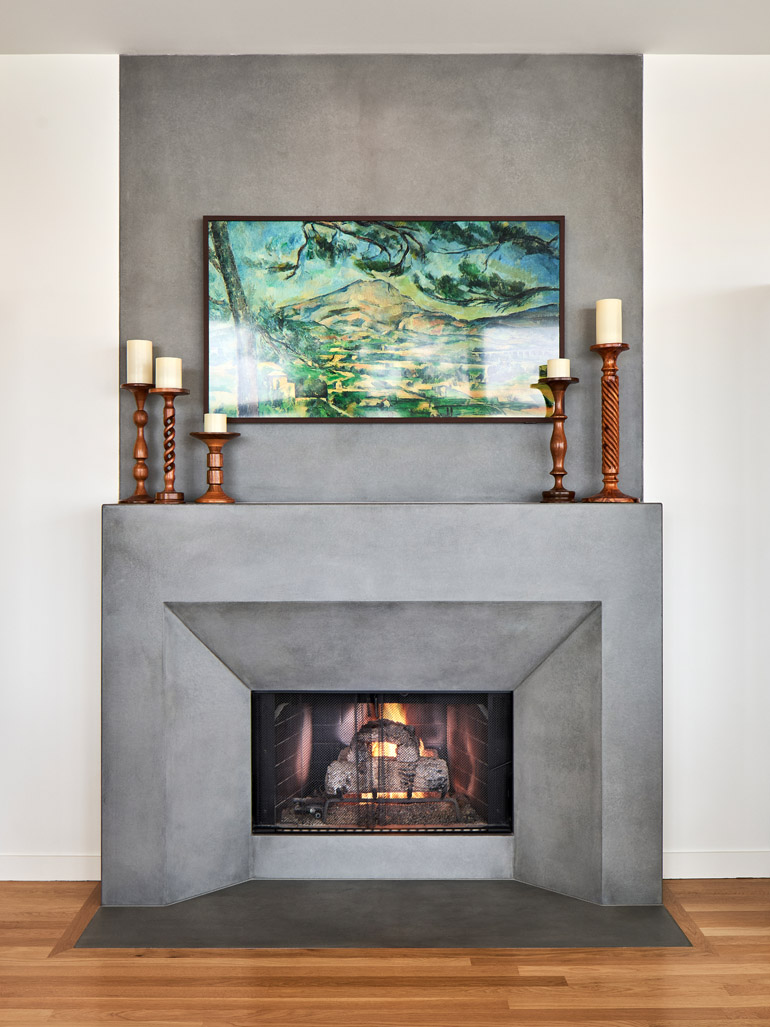
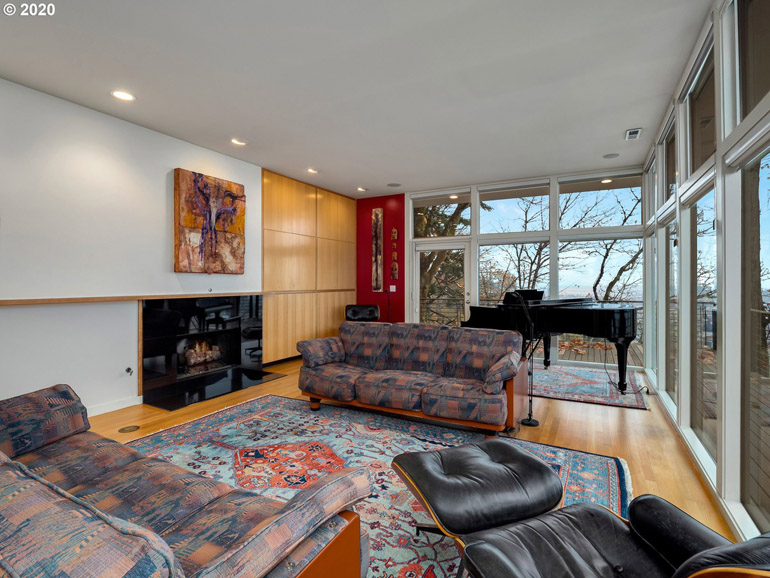
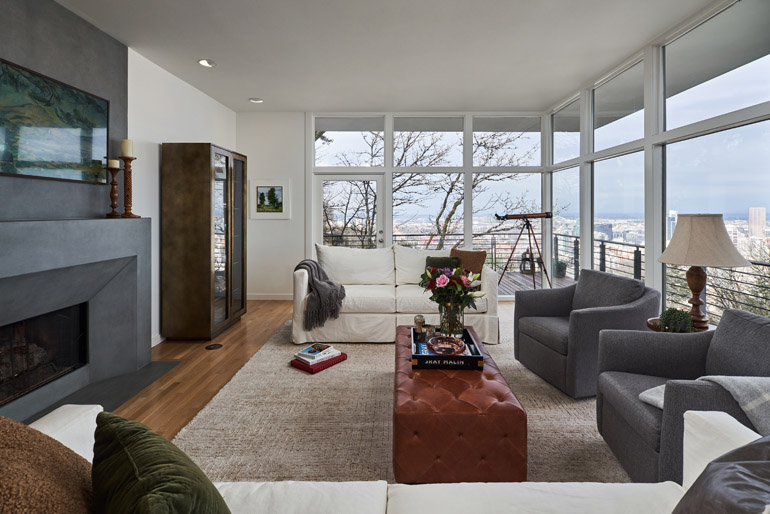
“They really were one client together with a range of needs,” Bellusci says. “But they did have similar tastes that meet traditional and modern.”
For the couple, Bellusci focused on opening up the space and creating flow by replacing a peninsula with an island in the kitchen and installing new cabinetry. She tied the range hood into the backsplash to make it feel seamless and provide a stunning backdrop for the kitchen.
The designer also transformed the couple’s primary suite by adding a connection to the owner’s bathroom while keeping it accessible to a guest bedroom.
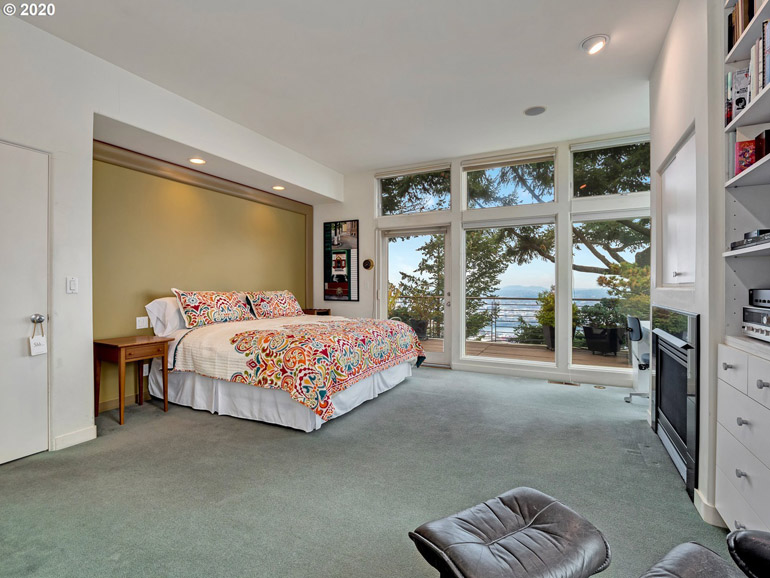
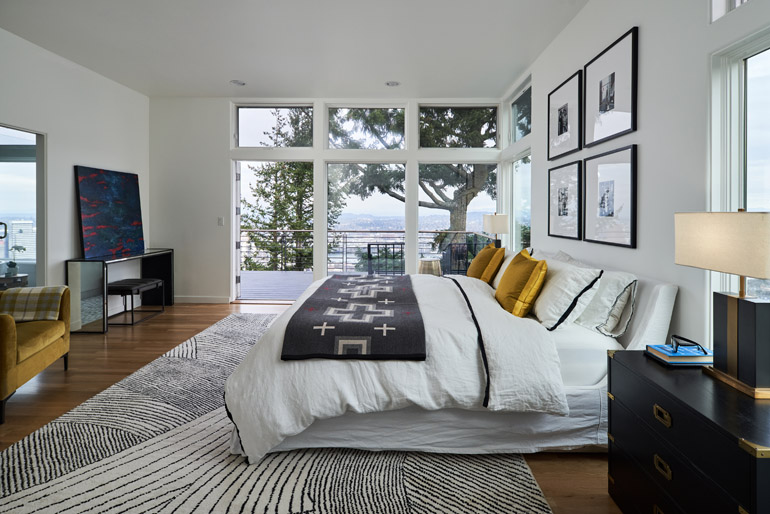
A new position for the homeowner’s bed creates a better view of the Portland cityscape.
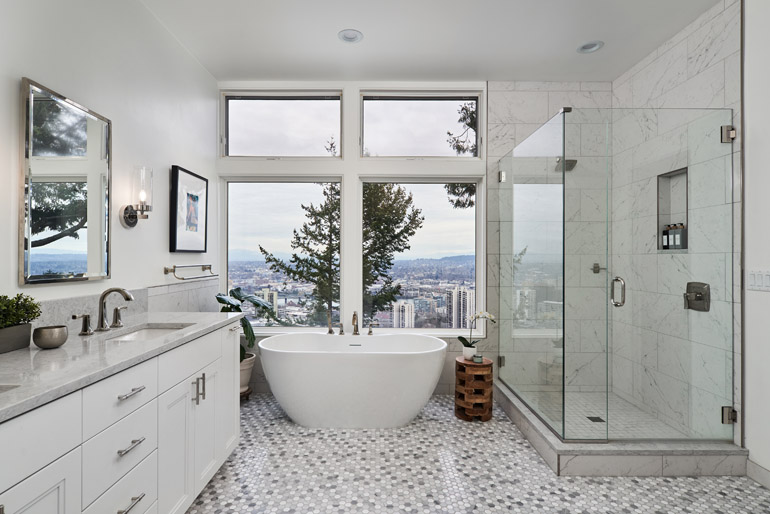
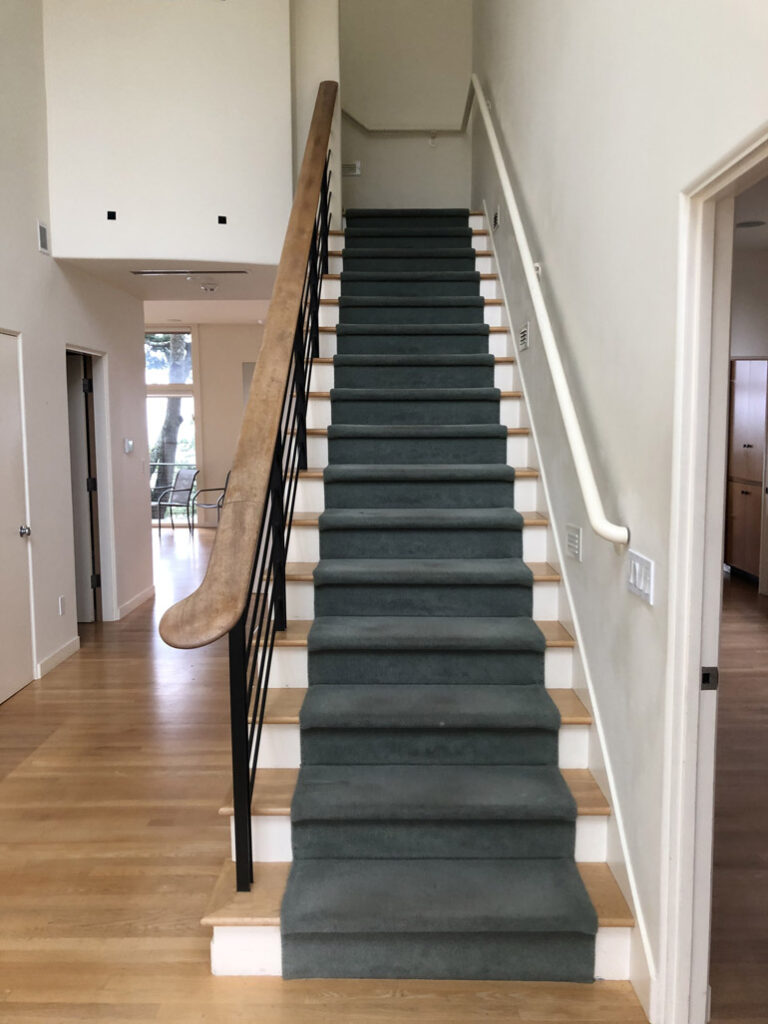
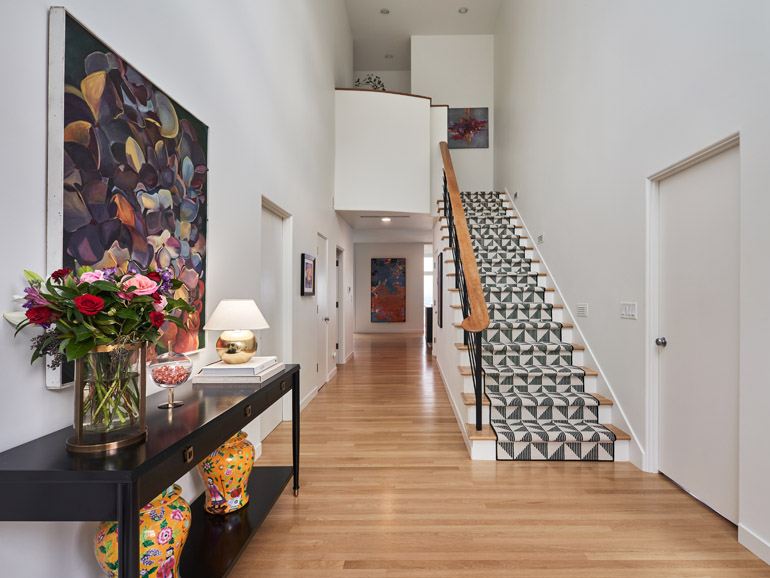
A patterned stair runner adds a bit of excitement between floors.
For the older resident’s space, the clients wanted a warmer feel in the partial kitchen, as well as specific accommodations for older residents. Bellusci employed classic tenets of aging-in-place design while keeping the finishes beautiful.
“Every aspect of the design prepares the space for what might happen down the road,” Bellusci says. “But you don’t want to put pieces in that will give you that hospital feel.”
The plan called for widening the doorways and installing hard surfaces to ease movement between spaces. She added ample lighting, as well as grab bars in the shower. She also built structure into the walls so that a chair lift could be installed down the line, if necessary.
When the family moved in, Bellusci could feel it all sing.
“That’s my favorite part of the process,” she says, “when the clients bring in all of their personal things and it all comes together.”
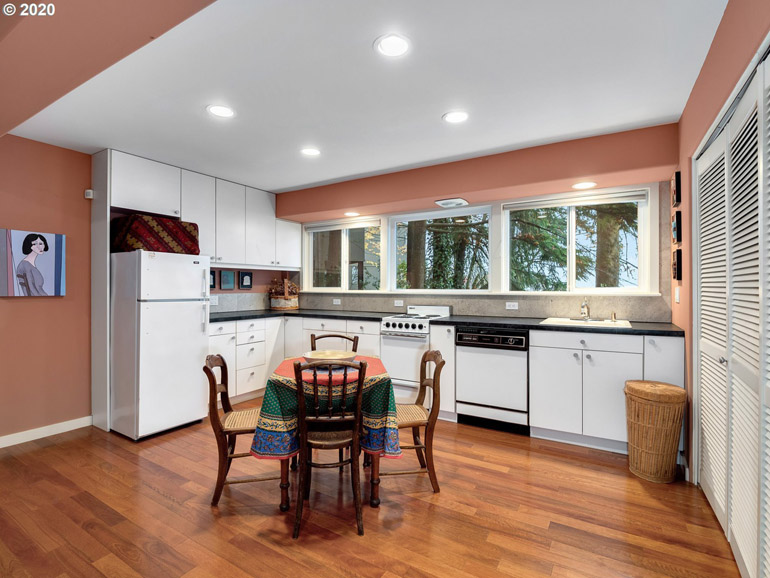
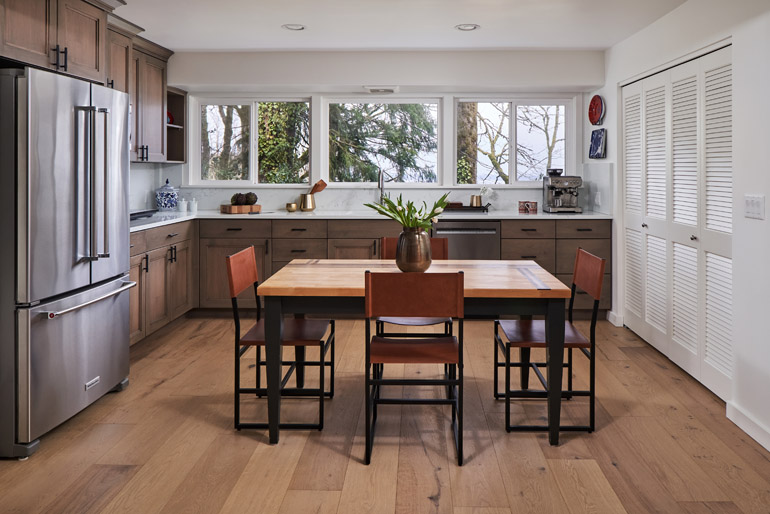
An eat-in kitchenette provides just enough room for comfort and independence.
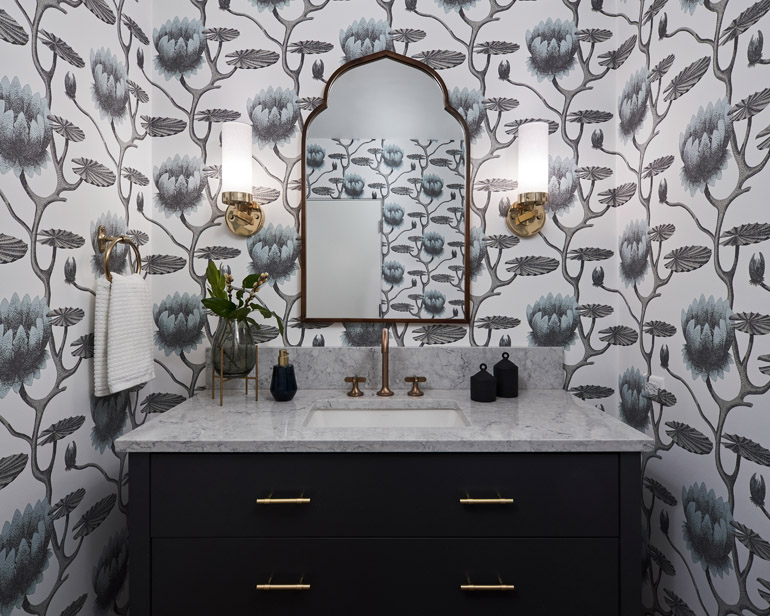
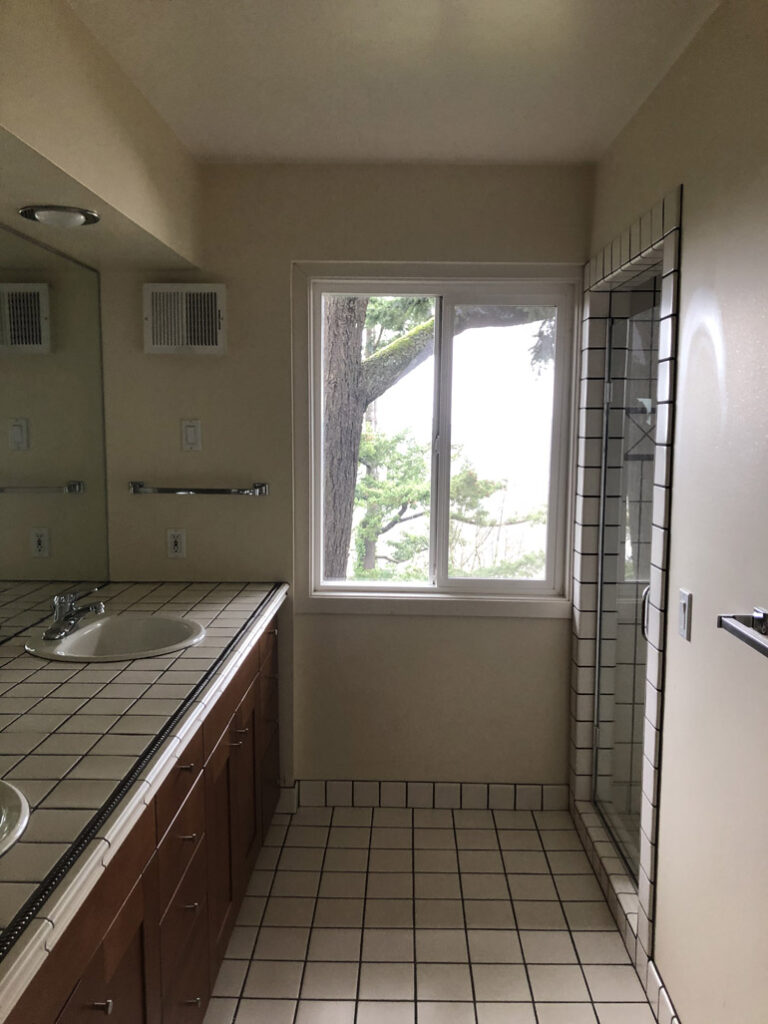
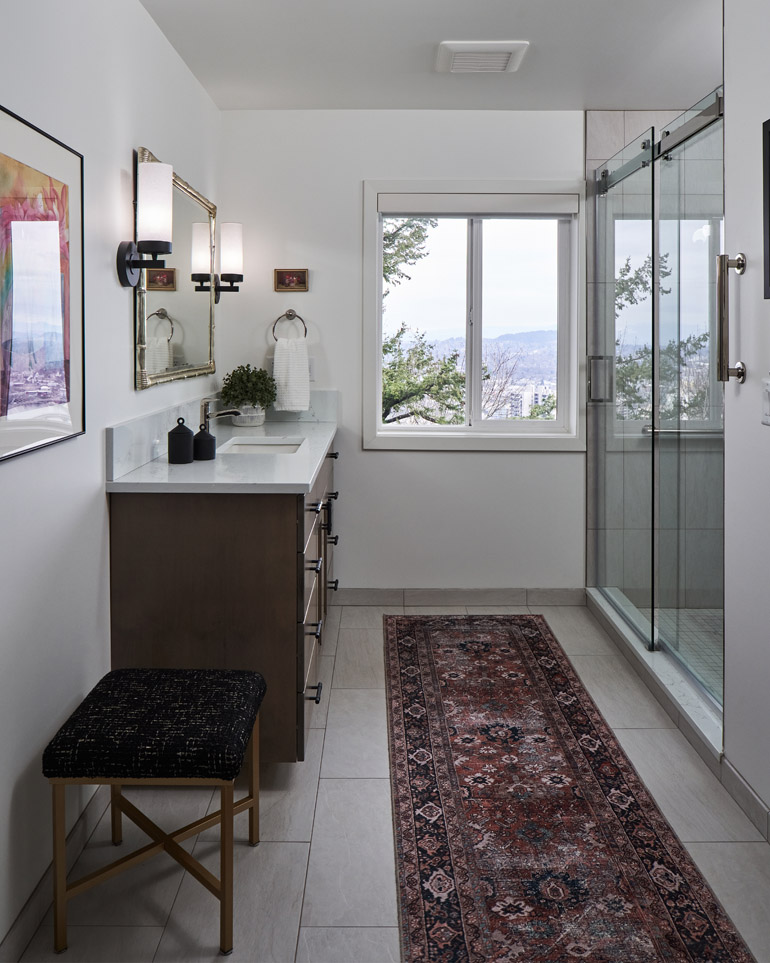
Higher counter levels, walk-in showers, and better lighting help accommodate older residents.


